Q & A: UM-Flint Marketing Professor on the Future of Technology and Shopping
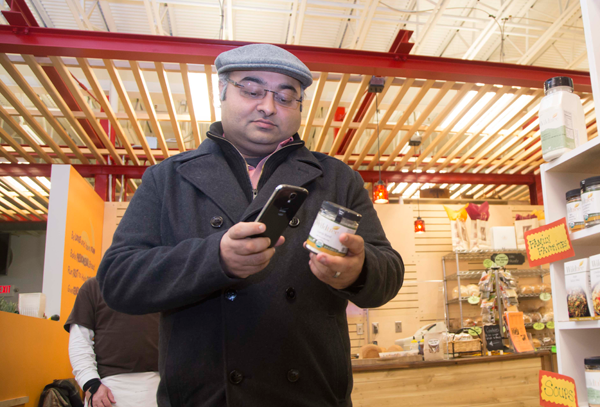
The shopping season is picking up steam this week with traditional days like Black Friday and online enticements by retailers. With smart phones and tablets now commonplace, is this changing how people shop? Is it changing how retailers reach out to shoppers? Syagnik Banerjee, an associate professor of marketing at the University of Michigan-Flint who specializes in mobile and interactive marketing, delves into the latest trends in this interview with UM-Flint staff writer Robert Gold. Banerjee's research, published in numerous academic journals, has explored the effect of mobile devices on digital marketing and consumer behavior.
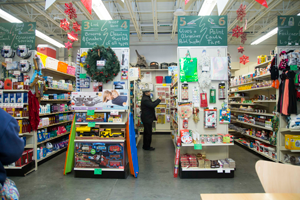
Q: What are common mistakes marketers make when targeting customers via mobile devices?
A: Marketers make a variety of mistakes, including violating consumers' privacy, disturbing them with messages at inappropriate times, displaying or sharing irrelevant content, redirecting them to websites designed only for desktops, not customizing the offer/deal sufficiently for the needs of the audience, and not integrating the communication with their overall marketing program (which would help connect their online as well as offline marketing goals).
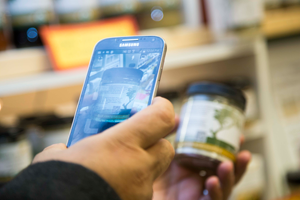
Q: Smart phones, tablets, and other devices are so prevalent now. Is that changing how comfortable shoppers are with using these devices to make purchases? Does the location make a difference (at home vs. in store?)? Are attitudes changing over time?
A: If we look at global trends, we notice the three major indicators that show everything is positive: a) smartphone adoption is increasing; b) mobile internet use is exploding, and c) so are commercial transactions done via mobile devices. But if we look at which locations and tasks mobiles are used for, we notice that except for locating stores, using shopping lists, and checking prices, mobiles are used more than 60% of the times from inside homes. If we look at the same numbers for tablets, the inside home use becomes between 80-90%. Though attitudes are changing, without greater diffusion of mobile use across multiple locations, the entire industry of location-based services/marketing will not take off. And that is, really, the next stage of evolution for consumers.
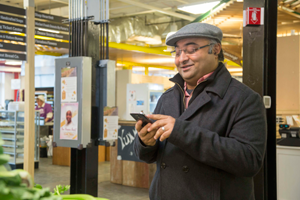
Q: What are new ways marketers are trying to reach potential customers via mobile marketing?
A: With the exponential global surge in online shopping, the retail industry has been concerned that unless retail experiences are innovatively redesigned, the retail malls will see drastic declines in footfall and store traffic. They have turned to mobile devices to bring customers back into the store, by making more real-time information available at their fingertips through location-based ads/services, and adding to traditional shopping experiences with augmented reality apps and new mobile payment platforms. While the developed nations are seeing more applications in shopping and retail, the developing nations are seeing more applications surge in healthcare and education.
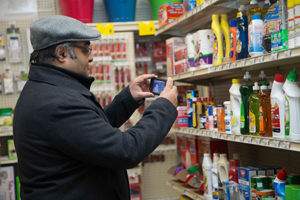
Q: What factors in a person's background influence their comfort level with using mobile devices when shopping or researching products online?
A: From most of the data I have observed and studied, two interesting factors that broadly affect the adoption and use of the mobile phone are ethnicity/cultural background and lack of resources. The ethnicity or culture influences how we socially connect to others and also how we multi-task. In all the studies I have conducted, I have found large differences in mobile shopping patterns between white/Caucasian and other ethnic groups (including African American, Asian, Hispanic, Native American, etc.), where the former have demonstrated lower interest than the latter. In terms of lack of financial resources, I have observed poorer households in the U.S.A. using mobile internet to substitute laptops (which are perceived as more expensive), and even globally, families in the bottom-of-the-pyramid (BOP) who don't have adequate access to nutritious food or toilets, have access to and use mobile devices. Though they may not be "shopping online" they do play games, and use wide ranges of internet-enabled applications, ranging from agriculture, to healthcare, and banking. Less affluent populations may use it for their basic needs, entertainment, or in some cases even for being conspicuous in social settings. For the more affluent income groups, perception of network security and privacy settings become important determinants of mobile online shopping patterns. However, the factors I mention here only skim the tip of the iceberg.
Q: Has anything surprised you about people's attitudes towards using mobile devices when shopping? Are there any risks people overlook? Rewards?
A: While examining the U.S. market, and knowing about how perceptions of loss-of-control tend to keep a large fraction of mobile online transactions restricted inside the home, I am indeed surprised by the kind of private information people tend to share on social networks. On one hand, they are concerned about privacy and data security, on the other they are telling the whole world that they are away from home vacationing on a beach. There's a website called "PleaseRobMe" that uses Twitter's search functionality to show location-based messages, raising awareness about over-sharing. People are getting fired and arrested for venting their "honest" feelings about their workplace, or politicians/celebrities, making inappropriate comments, or impulsive, politically incorrect statements on public networks based on the immediate emotional reactions to incidents. Also, there's a growing population of attention-challenged, oblivious adults who have been crashing into cars due to texting while driving, or walking into lampposts, falling into fountains, and off the bridge due to texting/checking emails while walking. Overall, I believe users are unable to a) identify private from public information, b) assess public from private networks, and c) successfully balance virtual interactions with consciousness of real world capabilities and needs. And all of these are critically important if mobile platforms' participation in improving our daily lives is to see a sustainable future.
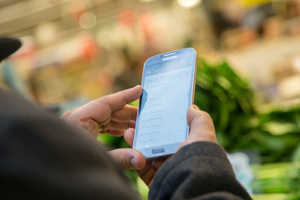
Q: Are you currently conducting any research related to mobile marketing?
A: I do have eight projects I'm working on, and all are related to mobile. Some of them are related to psychological aspects of mobile purchase behaviors, and some related to deciphering, analyzing, and building stories out of big data emerging from mobile social media.
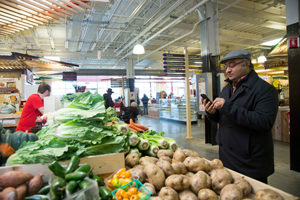
Q: Developments such as commercial drones, driverless vehicles, and companies like Uber have been making the news lately. Do any of these or other developments seem likely to change how we exchange goods and services?
A: Mobiles have opened up a two-way gate, something I consider similar to a trigger and a telescope while shooting for target practice. Not only does the device act as a trigger that marketers can use to reach their target audiences, but it also acts as a telescope that brings the marketer insights about his target consumer. The quantity of this information is growing at an exponential pace. Of all the data the world is sitting on today, 90% was generated in the last two years.
I view this device as a pivotal stepping stone towards learning how to develop wearable computing, biometrics, and finally, the broader internet-of-things. Be it Google Glass that helps you navigate to a store, Google's smart contact lens that helps control glucose levels, or the Swiss farmer, Mr. Christian Oesch, who has implanted sensors in his cows that send text messages to his mobile phone when the cows are in heat, or the intelligent refrigerator that automatically places reorders for groceries when you are out of stock, all these examples are founded on that streaming, real-time two-way interaction and data exchange process. Mobile marketing is gradually giving way to ubiquitous (anytime-anywhere) computing, consumption, and commerce. Two broad questions intrigue me. One is about how shall we store, structure, model, and analyze this constant streaming behavioral data to best understand and address customer needs. The other, is how will human decision making processes evolve in such complex, information-rich environments dealing with the challenges of conflicted consciousness between real and virtual worlds.
Contact University Relations staff writer Robert Gold with comments, questions, and ideas at goldr@umflint.edu, (810) 424-5596, or on Twitter, @writerobert.
Related Posts
No related photos.
UM-Flint News
The Office of Marketing & Communications can be reached at mac-flint@umich.edu.